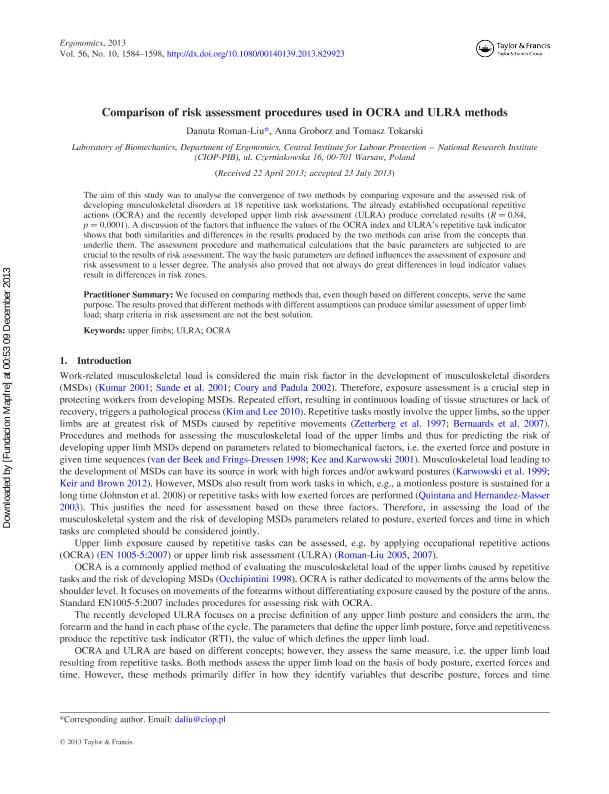Comparison of risk assessment procedures used in OCRA and ULRA methods

Contenido multimedia no disponible por derechos de autor o por acceso restringido. Contacte con la institución para más información.
| Tag | 1 | 2 | Valor |
|---|---|---|---|
| LDR | 00000cab a2200000 4500 | ||
| 001 | MAP20130040769 | ||
| 003 | MAP | ||
| 005 | 20131209105115.0 | ||
| 008 | 131209e20131007esp|||p |0|||b|spa d | ||
| 040 | $aMAP$bspa$dMAP | ||
| 084 | $a875 | ||
| 100 | 1 | $0MAPA20130017617$aRoman-Liu, Danuta | |
| 245 | 1 | 0 | $aComparison of risk assessment procedures used in OCRA and ULRA methods$cDanuta Roman-Liu, Anna Groborz, Tomasz Tokarski |
| 520 | $aThe aim of this study was to analyse the convergence of two methods by comparing exposure and the assessed risk of developing musculoskeletal disorders at 18 repetitive task workstations. The already established occupational repetitive actions (OCRA) and the recently developed upper limb risk assessment (ULRA) produce correlated results (R = 0.84, p = 0.0001). A discussion of the factors that influence the values of the OCRA index and ULRA's repetitive task indicator shows that both similarities and differences in the results produced by the two methods can arise from the concepts that underlie them. The assessment procedure and mathematical calculations that the basic parameters are subjected to are crucial to the results of risk assessment. The way the basic parameters are defined influences the assessment of exposure and risk assessment to a lesser degree. The analysis also proved that not always do great differences in load indicator values result in differences in risk zones. | ||
| 773 | 0 | $wMAP20100019818$tErgonomics : the international journal of research and practice in human factors and ergonomics$dOxon [United Kingdom] : Taylor & Francis, 2010-$x0014-0139$g07/10/2013 Volumen 56 Número 10 - octubre 2013 |

